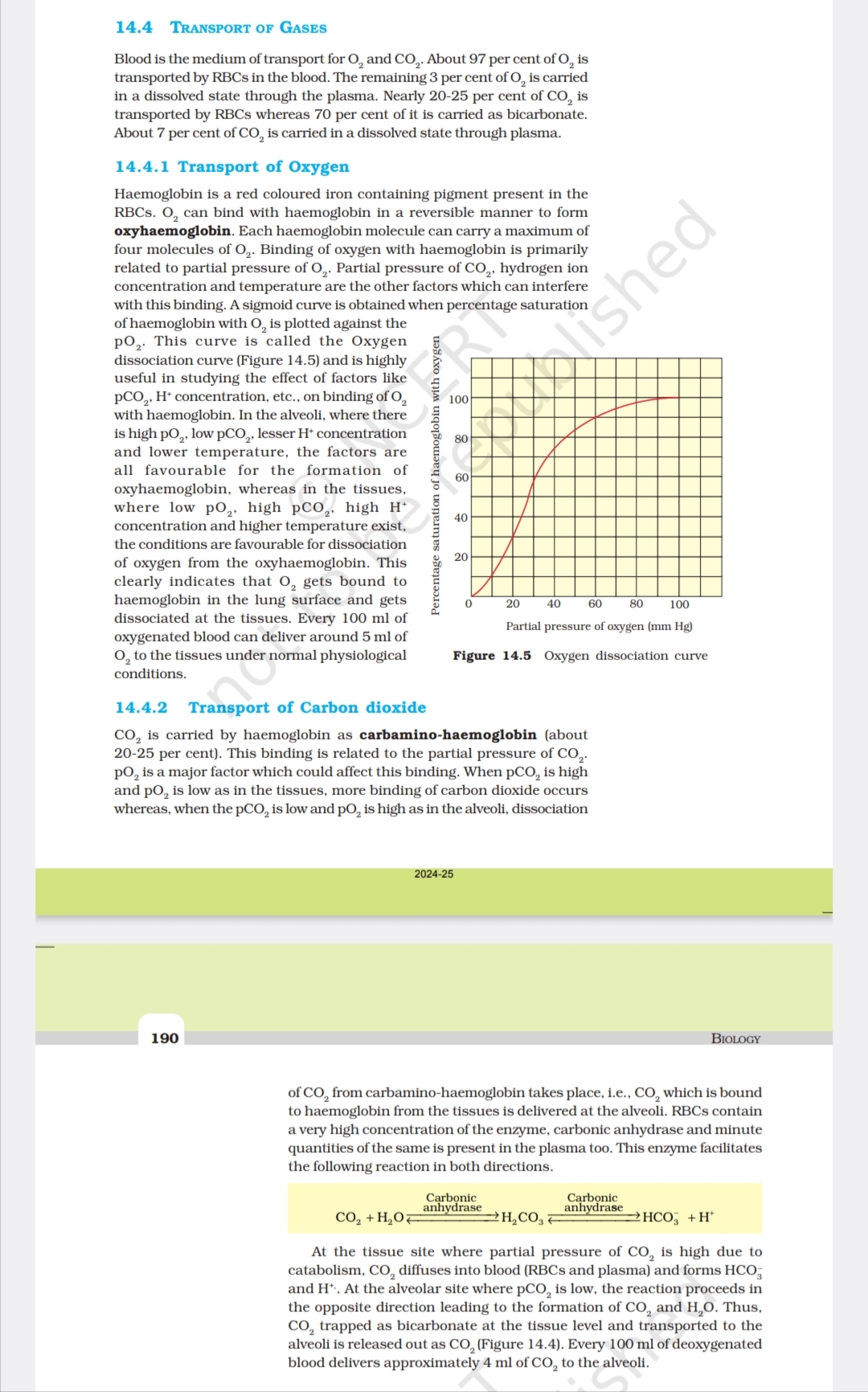What are the mechanisms of transport for gases like O2 and CO2 in the blood?

Understand the Problem
The question is about the physiological mechanisms involved in the transport of gases (O2 and CO2) in the blood, focusing on the roles of haemoglobin and factors affecting gas binding. It seems to be asking for an elaboration or explanation of these concepts.
Answer
Oxygen: 97% as oxyhaemoglobin, 3% dissolved; CO2: 70% as bicarbonate, 20-25% as carbamino-hemoglobin, 7% dissolved.
Oxygen is transported mainly by binding to hemoglobin as oxyhaemoglobin (97%) and in a dissolved form in plasma (3%). Carbon dioxide is transported mainly as bicarbonate ions (70%), bound to hemoglobin as carbamino-hemoglobin (20-25%), and dissolved in plasma (7%).
Answer for screen readers
Oxygen is transported mainly by binding to hemoglobin as oxyhaemoglobin (97%) and in a dissolved form in plasma (3%). Carbon dioxide is transported mainly as bicarbonate ions (70%), bound to hemoglobin as carbamino-hemoglobin (20-25%), and dissolved in plasma (7%).
More Information
Oxygen binds reversibly to hemoglobin affected by factors like partial pressures and H+ concentration. CO2 is converted to bicarbonate, transported bound to proteins, or dissolved.
Tips
A common mistake is misunderstanding the role of hemoglobin; it significantly increases the blood's oxygen-carrying capacity.
Sources
- Transport of Gases | Anatomy and Physiology II - courses.lumenlearning.com
- Physiology, Carbon Dioxide Transport - StatPearls - ncbi.nlm.nih.gov
- Transport of Carbon Dioxide in the Blood | Biology for Majors II - courses.lumenlearning.com
AI-generated content may contain errors. Please verify critical information